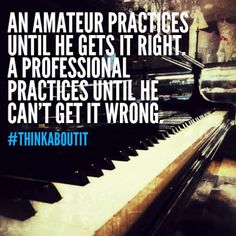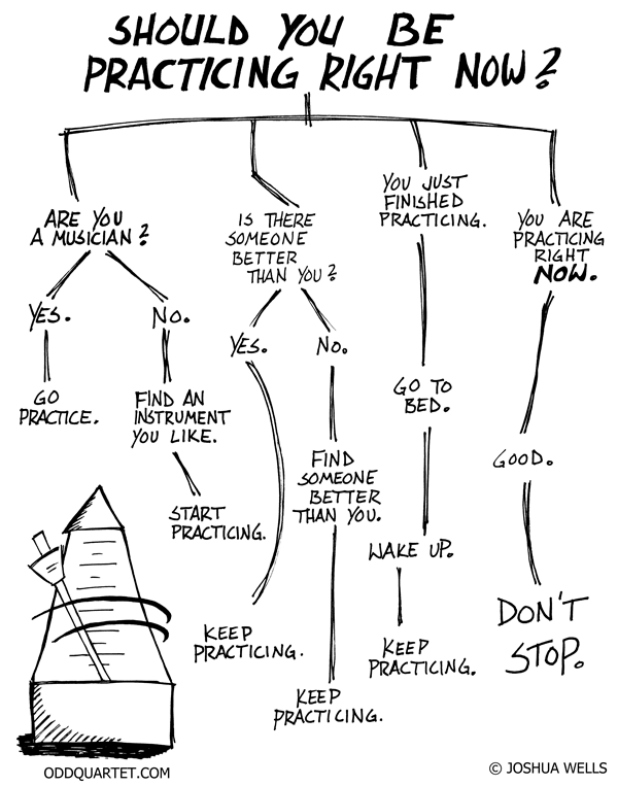Monica Phillips
Materials Every Student Needs
Wednesday, August 31, 2016 by Monica Phillips | Uncategorized
Now that the school supply fiasco has settled somewhat, have you considered what your music student might need? What supplies, materials, books, and tools are helpful? Here is my Top Ten list (in no particular order):
- Steno notebook: every student is required to have a notebook into which I record practice notes, assignments, parent notes, and other items. I also stamp a practice chart each week for students to record their practice time and flashcard times. A lesson will be less-than-successful if a student does not have their notebook.
- Technic/Exercises book: a book with finger exercises, warm-ups, and technical drills meant to train the hand toward certain piano techniques. This book tend to be the student's least favorite resource because it's hard - it requires more technical practice and developing of habit than any other book. I typically start beginners in the Michael Aaron Piano Course (primer level through 2nd level) unless it's an older student) and then move to the John Thompson Modern Course (Grade 1) when I see a student's technique develop beyond beginner.
- Lessons/Repertoire book: this is the book where all concepts come together in cohesive selections of music. The books contain original songs and arrangements of well-known pieces appropriately leveled for the concepts currently being practiced. You'll see basic technique put into application within this resource.
- Theory Book: writing/understanding written music is just as important as playing music. The theory book applies concepts learned at the keyboard by putting them to practice on paper. Students learn the mechanics, math, and science of written music as well as rhythm, counting, notated relationships, and composition. Beginner students use the theory book which coordinates with their other books. Later, I move the student to "Practical Theory: Complete" by Sandy Feldstein, which is an excellent and comprehensive overview of written music.
- Flashcards: beginning students are required to have "Complete Color Coded Flashcards" by Alfred Music. This set of cards reinforces note names, symbols, and vocabulary used most frequently in piano. Students work through their flashcards and record their times each day/week. The goal is to complete the entire set for me within 3 minutes, and when that goal is reached the student earns a reward and no longer has to practice the flashcards each week. But be careful: if I determine they've forgotten their symbols, I'm happy to assign the flashcards again.
- Pencil: students need to write on their music! They need to write reminders, directions, arrows, circle mistakes, mark changes, denote helps or just a star meaning "pay attention here." Additionally, students should never - I repeat, NEVER - complete their theory work in pen. Mistakes are common and pencils erase!
- Highlighter: I advise students to use a highlighter in their music to bring attention to specific notes, accidentals, or sections which require extra attention or focus. Something about that bright color....it works every time!
- Metronome: No student should ever be without a metronome. A metronome is a device which keeps a steady tempo, providing clicks at specified intervals to guide the student's rhythm and timing. The old-fashioned, gravity-driven ones are awesome, but there are also some great free metronome apps out there. Other options include small electronic devices found at your local music store or Amazon. Students need to begin working with their metronome around the time they begin learning eighth notes.
- Patient and prompting parents: students are developing a new habit that may stick for life! When music students are supported by patient parents, coaching and guiding but encouraging, they learn positive self-talk and confidence in their craft. Nagging, haranguing, critiquing, yelling, insulting, or ignoring don't work well. Prompting, reminding, helping, guiding, encouraging, uplifting, supporting, and discussing work very well!
- Positive attitude: whether your student thinks he can or thinks he can't....he's right! When a student comes for a lesson prepared with all assignments finished but with a negative or self-doubting attitude, the lesson is difficult for student and teacher, not to mention less-than-fun. Finished assignments paired with a positive attitude makes for a fun and joyful learning environment. I love to laugh, joke, play, and have fun with my students!
There you have it: Piano lessons supply list! As always, never hesitate to contact me with questions or concerns! Now......go practice!
The Science of Practice
Friday, August 19, 2016 by Monica Phillips | Uncategorized
So here we are....the beginning of another school year. Isn't it crazy how quickly time flies?
 Practicing is going to be the pinnacle activity for your student. Without regular and lengthy practice time, a student loses what learning is developed. Specifically, it takes the brain working on something for longer than 20 minutes for it to become learned. Here's how this breaks down: If a student practices for 10 minutes, the brain has only rehearsed what it already knows. There has not been enough repetition and focused time for the brain to re-write the skill with new information. Once a student hits the 20-minute mark, the brain rehearses what it knows and then overwrites it with new information to support the skill. In addition, if the student extends practice time to the 30-minute mark, the brain gets to rehearse what it knows, relearn or rewrite new and correct information, and then follow up by rehearsing that new information. So, the optimal time for practicing sessions is 30 minutes or longer. Research has also found that breaks of 2-3 minutes within practice time does not typically deter the learning process.
Practicing is going to be the pinnacle activity for your student. Without regular and lengthy practice time, a student loses what learning is developed. Specifically, it takes the brain working on something for longer than 20 minutes for it to become learned. Here's how this breaks down: If a student practices for 10 minutes, the brain has only rehearsed what it already knows. There has not been enough repetition and focused time for the brain to re-write the skill with new information. Once a student hits the 20-minute mark, the brain rehearses what it knows and then overwrites it with new information to support the skill. In addition, if the student extends practice time to the 30-minute mark, the brain gets to rehearse what it knows, relearn or rewrite new and correct information, and then follow up by rehearsing that new information. So, the optimal time for practicing sessions is 30 minutes or longer. Research has also found that breaks of 2-3 minutes within practice time does not typically deter the learning process.
Of course, you know your student better than anyone. Perhaps your child struggles to focus for a full 30-minute block, or perhaps your child has extensive focus and would practice for hours if you'd let him. These situations require careful observation and coaching from both teacher and parent. Some ideas to try:
- Practice in 10-minute intervals: 10 minutes rehearsing what you know, take a 2-minute break, then go again for another 10 minutes to overwrite errors - taking breaks until a cumulative time of 30 minutes is reached.
- Alternate practice material: spend 30 minutes one day on flashcards, another day on technic, another day on lessons, another on theory. Break it up into pieces if need be.
- Focus on sections: consider practicing a particular line or section rather than tackling the whole piece from start to finish
- Practice differently: try practicing right hand, then left, then together; try having left hand play the right hand part and vice-versa; consider writing tips & reminders on the music.
But what about making that practice time a habit? Researchers have found that it takes an average of 66 days (just over 2 months) of repeating an activity for it to become a habit. More specifically, the full range for people to establish a new habit is 18 - 254 days. That's quite a range! This means that expecting a child to remember to practice and follow through is going to take some serious planning.
How does this apply to your music student? It can make or break their success in learning music techniques - practice makes progress! If it takes that long to make practicing a habit, there is a significant possibility that a practice habit may be hard to come by. Here are some helpful tips:
- Set a regular time each day for practice and keep it.
- Try practicing longer amounts of times fewer days.

- Consider practicing in shorter bursts twice a day.
- Set an alarm for start time and finishing time.
- Create an award system for completing practice each day/week.
In general, there are lots of practice tips to help make practicing the most productive and fun it can be. It really can be fun to sit down to practice something and finally nail it! Here are my top ten tips:
- Never try to learn something with both hands right away. Take it apart!
- Try to zoom in on the area causing the most mistakes and work it more diligently.
- Set a goal for that particular session and work hard to meet it.
- Slow it down. Learn it at a snail's pace before trying to get it up to speed.
- Practice without your instrument. Visualize your hands doing the piece correctly and catch mistakes you make.
- Reward yourself when progress is made. In other words, celebrate the good stuff!
- Write on your music. Make colored reminders, notes, symbols, arrows, etc. that help you see where your mistakes are.
- Use white out. Sometimes there's too much clutter on the page. Get rid of finger numbers or other "ink" that distracts you.
- Practice it backwards. Play the last measure until it's perfect. Then play the second-to-last measure. Then put them together. Continue.
- Ask for help. Maybe you're missing something that someone else can catch.
Ultimately, practicing is the key to learning these new musical skills. Without practice, the brain barely retains what little it can recall at a moment's notice. The goal of practice is to attain muscle memory, therefore creating a musical piece without error. It can be done - if your student will develop the habit and create focused time at the piano!
As always, contact me if you have questions or need advice! I'm here to serve!

